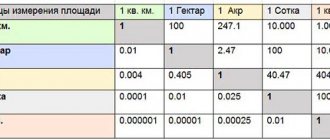The concept of land consolidation
When two (or more) adjacent land plots are combined into one, a new plot appears in the official state cadastre, and the combined adjacent ones cease to exist as real estate. Title to the new lot is given to the owner of the original lots, and if the original lots were owned by different people, then those people will have the new combined lot in common ownership.
It is necessary to take into account that according to the Land Code of the Russian Federation, the merger of land plots granted ownership on an indefinite right of use, lifelong inherited possession or by the right of free use to different persons is not allowed, but if all these plots are owned by one person, then he may well combine them according to to your will.
Who can do this and on what basis?
Only different persons or one person owning adjacent plots of land by right of ownership can apply for association.
In addition to the owners, those to whom the land rightfully belongs can participate in the merger of plots:
- free use;
- lifelong inheritable property;
- unlimited use on an ongoing basis under a lease agreement (read about the cost of rent and calculations here).
The merger of plots for those who are not the owners is allowed only if all rights are vested in one citizen for all land plots (clause 5 of Article 11.6 of the Land Code of the Russian Federation).
Those who own land and are encumbered with a mortgage have the right to unite. But a merger is possible with a site for which there are no such encumbrances.
In this case, the lien right is transferred to the entire newly formed plot of land, unless the parties wish to indicate otherwise in their agreement (Clause 6, Article 11.6 of the Land Code of the Russian Federation). If there is only one citizen who is the legal owner of all lands participating in the unification, then he becomes the sole owner of the newly formed plot. If there are several owners, a common shared ownership is formed.
When combining lands with different types of permitted use, this type is first brought to a single denominator - they are changed on one of the sites. Only after this is their merging possible.
Conditions for combining land plots
The legislation specifically stipulates the requirements for initial sites, in particular:
- in addition to their contiguity, boundaries should be established in accordance with government regulations;
- In these territories, characteristic points must be fixed with due accuracy. If it turns out that the accuracy is lower than required by the standards, it will be necessary to further clarify the boundary points of such a section;
- The merged plots must belong to the same land category. In some cases, when the owner of a new plot will choose the type of its use, this rule may be violated;
- the initial sites must be geographically located in the same locality (municipal entity);
- if it is planned to unite land plots that are provided for indefinite use, inherited for lifelong ownership or are in urgent free use, they must have one legal holder;
- when merging plots, the permissibility of using the real estate located on them must be maintained;
- the formation of new plots should not cause disadvantages in the area that impede the protection of lands and their rational use: wedging and interspersing, brokenness and striping, and also violate the requirements,
- established in the Land Code of Russia and federal legislation.
In addition, the legislation separately stipulates the requirements for the maximum limit of land size, which must be observed for new territories.
Which areas can be combined?
The Land Code allows for the merger of lands subject to a number of requirements:
- Location . Land plots must be located directly next to each other and have a common border. It is not allowed to combine plots located at a distance from each other and separated by the property of a third party;
- Land surveying . Before you begin merging, it is important to establish the boundaries of the areas. This problem is solved by the cadastral survey procedure. If it has not been carried out before, you need to invite specialists and draw boundaries;
- Special purpose . The initiators of the association can carry out it exclusively on the territory of one settlement / locality (horticultural farm, holiday village, cottage town, etc.). The plots, in accordance with the documents, must have a single purpose (individual housing construction, SNT, agricultural land, etc.). If one plot is allocated for residential construction and the other for agriculture, then it will not be possible to combine them;
- Ownership . Each property must have one owner. This information is enshrined in title documents and cannot be disputed.
Most of these requirements can be met. If the initiator of the association submits an application to the municipality, it may be rejected until all violations are eliminated.
The only issue that cannot be resolved is the requirement for the proximity of the combined areas and the purpose of the land.
The owner's decision to combine land plots into one
If the owner wants to combine the land plots belonging to him into one territory, then he cannot do without the help of specialists in order to comply with all the rules specified in the regulations, but also to embody all his own ideas. Indeed, in each case, legislative nuances of such a procedure may appear.
To carry out the consolidation of land plots in any option, it will be necessary to carry out preliminary surveying, which is, in fact, a set of works, which, among other things, includes calling cadastral service workers to the site to carry out geodetic measurements using equipment using satellites and fixing the boundaries of the new plot with conventional boundary lines signs.
Based on the results of the procedure, a boundary document (plan) is drawn up that complies with the standards prescribed by law.
Cadastral registration of a consolidated plot
After carrying out cadastral work and drawing up a boundary plan, you can proceed to the legal registration of the new site in the State Property Committee. In this case, the provisions listed in the Cadastre Law (Federal Law No. 221-FZ) must be observed, namely:
- information about the newly formed territory entered into the cadastre is initially temporary;
- all existing restrictions (as well as encumbrances and easements) of the original plots (if they did not arise as a result of the signing of contracts) in relation to the new plot are preserved to the same extent;
- if the new site was not assigned an address according to the established rules, a detailed description of its location is indicated in the State Property Committee.
If we talk about obtaining an address for the land, it is more convenient to do this after the geodetic work is completed, but before the cadastral registration process begins, since it takes less time for the owner of the new territory. However, the law does not prohibit assigning an address to a new plot after its cadastral registration.
The consolidation of plots becomes legally finalized when the state registration of ownership of the new plot takes place, and the accounting authorities, having received information about its implementation, assign the status of “archive” to the previously separated plots.
How to register ownership of a new memory?
Cadastral registration and registration of rights to a plot are carried out simultaneously (clause 2 of Article 41 of the Law on Real Estate Registration).
Plots that no longer exist will be deregistered and ownership rights to them will be terminated. The action algorithm is as follows:
- payment of the state fee for registering ownership of a new plot;
- the owner submits documents to the MFC or directly to the Registration Chamber;
- an MFC employee draws up an application for cadastral registration and registration of ownership of it at the time of application;
- the owner checks all the data and signs;
- an MFC employee creates a package of the application and the documents submitted by the owner and issues a receipt/inventory of their receipt;
- the owner is given a date for his next visit to the MFC to receive ready-made documents (no more than 12 working days - clause 6, clause 1, article 16 of the Law on Real Estate Registration);
- on the appointed day, the owner can receive an extract from the Unified State Register for the newly formed plot and other documents.
The merger of two land plots that are owned by one or more owners is a labor-intensive procedure that cannot be done without a cadastral specialist and the preparation of a whole list of documents. If you strictly follow the algorithm, merging can be done quickly and easily. The only costs are monetary – to pay for highly specialized services and state fees.
The procedure for combining land plots and documents for its registration
To unite land plots, each of them must be officially registered in the State Property Committee, as well as in the register of ownership of real estate. Registration must be supported by appropriate documentation. The merged areas must have the same purpose and common features.
List of required documents:
- Documents on ownership (state act on the right of ownership (use), lease agreement, certificate) and the presence of a cadastral number.
- Documents confirming the emergence of proprietary rights (purchase and sale agreement, certificate of inheritance, agreement on gift, exchange or lifelong maintenance, decision of executive authorities or court, as well as local council, administration order, etc.).
- Personal documents of the owner (user) of the plot: for citizens - a copy of the passport (first and second page and registration) and TIN code; for legal entities - a registration certificate, a copy of the Charter and a tax payer certificate and a certificate from the USREOU.
- If the site is developed, then documents confirming that the buildings have registered owners.
- For non-agricultural lands - a certificate of address confirmation.
If the plot is located within the boundaries of a garden plot, then documents from its managers will be required (certificate with the plot number, certificate of the garden society, certificate confirming registration, copies of the Charter, tax payer certificates, certificate of the garden society from the Unified State Register of Enterprises and Organizations).
The procedure for merging areas will be as follows:
- writing a statement of consent with the association from a notary, signing an agreement with land managers;
- preparation of documentation and its approval;
- obtaining an extract from the State Property Committee and a certificate of ownership.
Where to begin?
When starting the land consolidation procedure, the owner must collect the necessary documents. This list includes:
- title papers;
- technical documentation;
- extracts from the state register;
- consent of both owners in writing;
- consent of a third party (if necessary).
The package of documents includes a list of papers for both sites. If necessary, local governments may require additional information from owners.
If the land has one owner, then the merger is much easier. To do this, you will need a minimum list of papers.
Cancellation of land consolidation
According to the Federal Law on Cadastre (No. 221-FZ), deleting information about a consolidated land plot from the State Property Committee is possible, since when a new plot is registered in the cadastre, according to the law, temporary information is entered, which is such until the rights to the formed the object will be registered officially or after five years from the date of registration of the object.
After this, deregistration of the plot is possible only when it is converted real estate and, in accordance with the law, the decision on its formation can be canceled.
Where to go to merge two land plots with different cadastral numbers
Cadastral registration and registration of rights in relation to a newly formed plot are possible in various ways.
It could be:
- appeal to Rosreestr;
- submission of necessary papers to the MFC;
- visiting the land resources committee;
- filing an application electronically using the government services portal.
Any of the above options involves submitting a standard set of papers, the list of which is fixed by the provisions of Federal Law No. 218-FZ.
Cost of merging plots
No specialist will be able to tell you exactly how much the procedure for connecting land plots might cost unless he has information about your specific plots and the situation with documents and other information about what needs to be done. There are several criteria for assessing the cost of cadastral services, such as:
- complexity of the work ahead;
- area of objects;
- Accessibility by road;
- additional costs for the provision of related services;
- the presence or absence of any documents.
After a cadastral service specialist has visited the site, he will be able to assess in more detail the scope of the upcoming work and tell you the exact (or estimated) price that you will need to pay for preparing your plots for cadastral registration.
Author of the article
Subtleties of land unification
When starting the process, the interests of third parties should be taken into account. If your land is mortgaged or encumbered by a court decision, then you will not be able to freely dispose of it.
The status of the encumbrance may be transferred to the united land plot if you have not agreed on an exception with the participant of this encumbrance. All agreements should be documented.
Do not forget that renting a land plot by a third party also requires agreement on all conditions. If the leased area is participating in a consolidation, you must obtain the tenant's written consent to the consolidation.
Although such an operation also has its advantages. Given that the land being merged has at least one common boundary, the owners are not required to notify neighbors about the operation.
When faced with certain nuances in the preparation of documents, contact competent specialists. Lawyers will help you fill out the paperwork correctly and take into account all the nuances associated with the legal status of the new land plot.
For example, in some cases, land consolidation may be irrational and prevent the construction of new facilities or the use of land for its intended purpose. In this case, the authorities will most likely not issue a positive decision.








